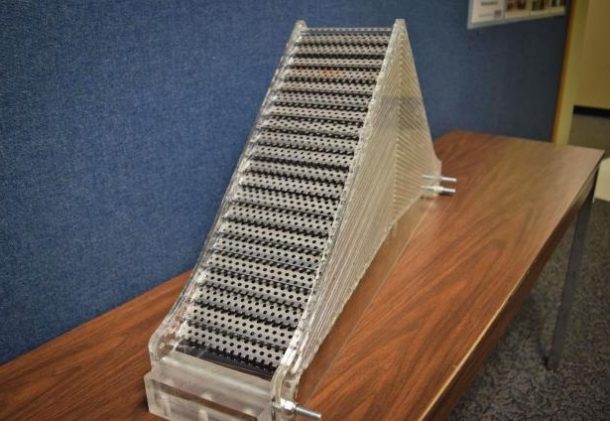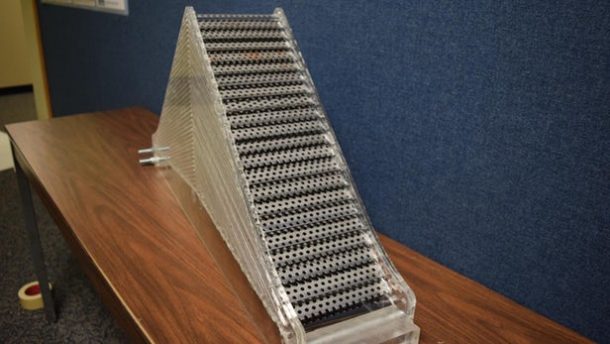Amanda D. Hanford is leading a team of researchers at Pensylvania State University that has developed an underwater acoustic cloaking device. The metamaterials device can bend underwater soundwaves, like sonar, around it without scattering them and acts as a cloak so that anything within it is not discovered at all.
Materials designed to exhibit properties not found in nature are known as metamaterials and are generally constructed from composite materials. These materials are engineered into repeating microscopic structures. The goal of the underwater acoustic cloaking device was to make a metamaterial that could completely cloak submarines or underwater installations.

This has been achieved in the lab before but only for the air. Water presents a much bigger challenge as it is much denser and less compressible than air. Hanford and her team had to form a metamaterial with cells that are smaller than the acoustic wavelength of sound in order to create their cloak.
They tried many options and eventually finalized a 3-ft-tall pyramid made out of perforated steel plates. They placed the setup in a large laboratory tank filled with water. They also placed a hydrophone that generated sound waves between 7,000 and 12,000 Hz. Receiver hydrophones were also used to monitor the echoes of the acoustic waves.

The waves hitting the metamaterial were reflected but it was found that as they did so, their phase matched those being reflected from the surface with a slightly decreased amplitude. This meant that the device could effectively cloak itself and anything inside it from instruments like sonar.
The team believes that the technology has a wide range of applications and could pave way for new stealth technology.


